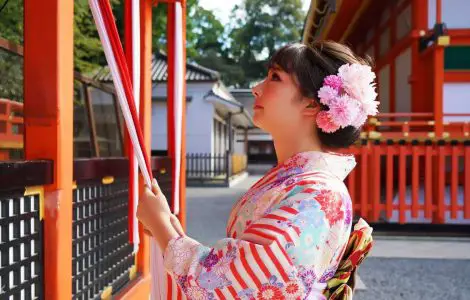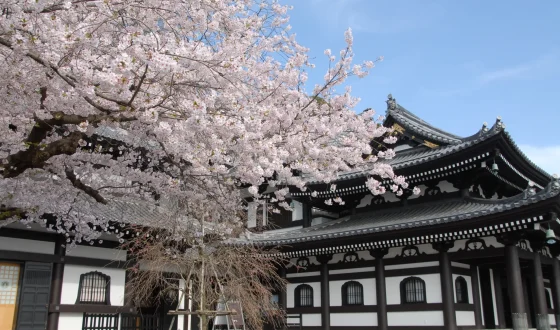Gain An Insight Into Traditional Japanese Instruments
Most of us are certainly familiar with many commonplace instruments such as flutes, drums, or guitars. Those ones appear in many nations like China, USA, Korea… But have you ever been curious about the musical instruments in Japan – a very famous country for unique culture and traditions? It is no exaggeration to say that Japan has one of the world’s longest and most fascinating history of traditional musical instruments. Despite the effects of westernization in Japan, traditional Japanese instruments still remain a valuable part of the culture and is highly praised around the world. In today’s blog, let’s discover 3 main groups of Japanese traditional instruments which are still performed today in Japan, and even in other parts of the world!
A Quick Glance At Traditional Japanese Instruments
1. Stringed Instruments
1.1. Koto
First, let’s take a look at Koto – a thirteen string instrument long known as the National instrument of Japan. Entered Japan in the 7th and 8th century (the Nara period), Koto quickly became popular among the elites and has been considered one of the most elegant and high-class Japanese musical instruments. It was first exclusively played as an accompanying instrument in the imperial court. However, through the years, the instrument has become a solo instrument.
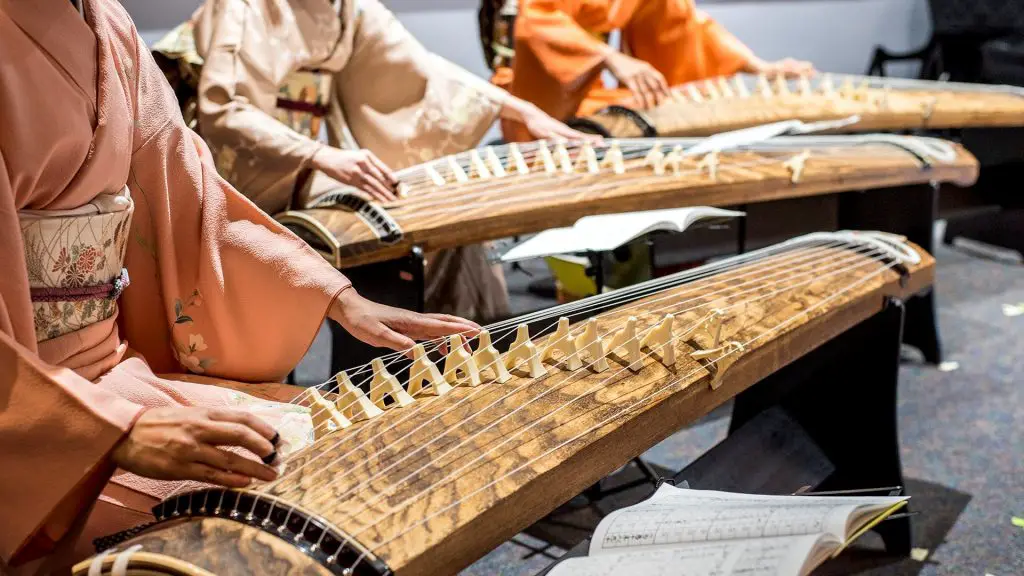
Koto can be now heard in modern Jazz, Rock and Pop songs.
A typical Koto consists of a single body (~180 centimeters in length) and made of Paulownia wood. The strings are stretched over movable bridges which allow the player to adjusts the pitch of each string. Though original Koto is stringed with silk, in recent years, strings are mostly made of polyester. The polyester strings have better tension so the players do not have to worry about the breaking while performing. Besides, the sound is vibrated longer and the production cost is also much lower.
Nowadays, though Koto has become less prominent in Japanese entertainment, it still remains popular and receives widespread international attention. This instrument can now be heard featuring in modern jazz, rock, and pop songs.
1.2. Biwa
One of the most recognizable Japanese string instruments is Biwa. This short-necked lute is derived from the Chinese instrument Pipa and often used in narrative singing and storytelling. Throughout its long history in Japan, the instrument has been developed into more than 7 types which are under 3 main groups: “classic Biwa,” the “middle and Edo Biwa”, and the “modern Biwa”, depending mainly on the number of strings, type of plectrum, size and their purpose.
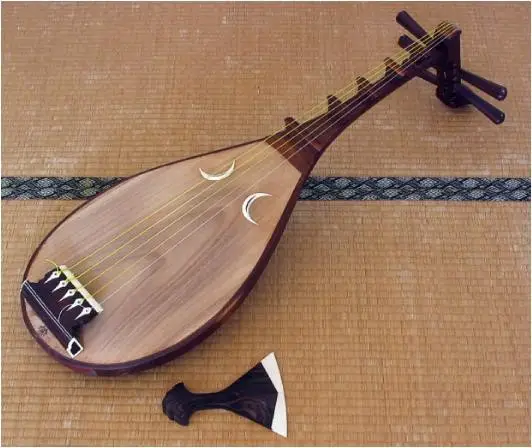
One of the most recognizable Japanese string instruments is Biwa.
A common Biwa comprises a pear-shaped body made by wood and four or five strings stretched over. The players pluck the strings with a small, thin, triangle piece, normally made by ivory, plastic or wood to produce tones.
Along with Koto, Biwa used to be one of the most influenced traditional Japanese instruments but its usage has experienced a great decline since the Heian period. Nowadays, many musicians try to revitalize the instrument by combining it with western instruments into songs to add more unique Japanese feeling.
1.3. Shamisen
Shamisen is a traditional Japanese instrument originated from the Chinese Sanxian. It is commonly used in accompanying singers of famous songs and storytelling.
Shamisen consists of a box traditionally covered by cat or dog skin, and at the moment by some synthetic materials with three strings stretched over. It has a similar length but the neck is slimmer than that of a guitar. Most of Shamisen genres are played with a large spectrum called the Bachi.
The instrument is widely introduced to the world in 2016 American stop-motion action fantasy film – Kubo and the Two strings. In the movie, the main character used the magical Shamisen’s power to defeat all of the enemies. The instrument is also used in the film’s soundtrack – “While My Guitar Gently Weeps,” covered by Regina Spektor.
1.4. Taisho Goto
Next up is an unique traditional Japanese instrument – Taisho Goto. It was developed in the 19th century by musician Goro Morita. After experiencing the Western instruments in Europe, he came up with an idea to create a new one. Taisho Goto is the combination of Western instruments with a number of buttons on the body and the traditional elements of two metal strings running its length. During the time, it is advanced into numerous forms, including electrified versions of the instrument.
Taisho Goto is famous for the pure and unique sound, as well as its ease of use in multiple musical genres, ranging from traditional music to modern Jpop.
FURTHER READINGS:
2. Flutes
2.1. Shakuhachi
Shakuhachi is the most famous Japanese wind instruments. It is a type of flute mostly used by the monks of Zen Buddhism for meditation. The history of this instrument dates back to the 7th century when it was first introduced from China into Japan.
Similar to another kind of flutes, the Shakuhachi is constructed in different lengths with standard four holes at the front and one at the back. Traditionally, the instrument is made of bamboo but modern version nowadays is also made of hardwoods or even plastic.
The haunting and enchanting sound allows Shakuhachi to be used in various kind of music and remain well-known throughout more than 1300 years of history until now.
2.2. Hichiriki
Along with Ryuteki, Hichiriki is one of two main instruments used in Japanese gagaku music. Not many people can play this flute due to its complex double reed construction. The instrument is made of bamboo with a body of 18 centimeters in length. Along the body is seven finger holes at the front and two at the back. The sound of Hichiriki is quite similar to that of a clarinet. The brightness in the sound makes it become one of the sacred traditional Japanese instruments and is commonly played at weddings in Japan.
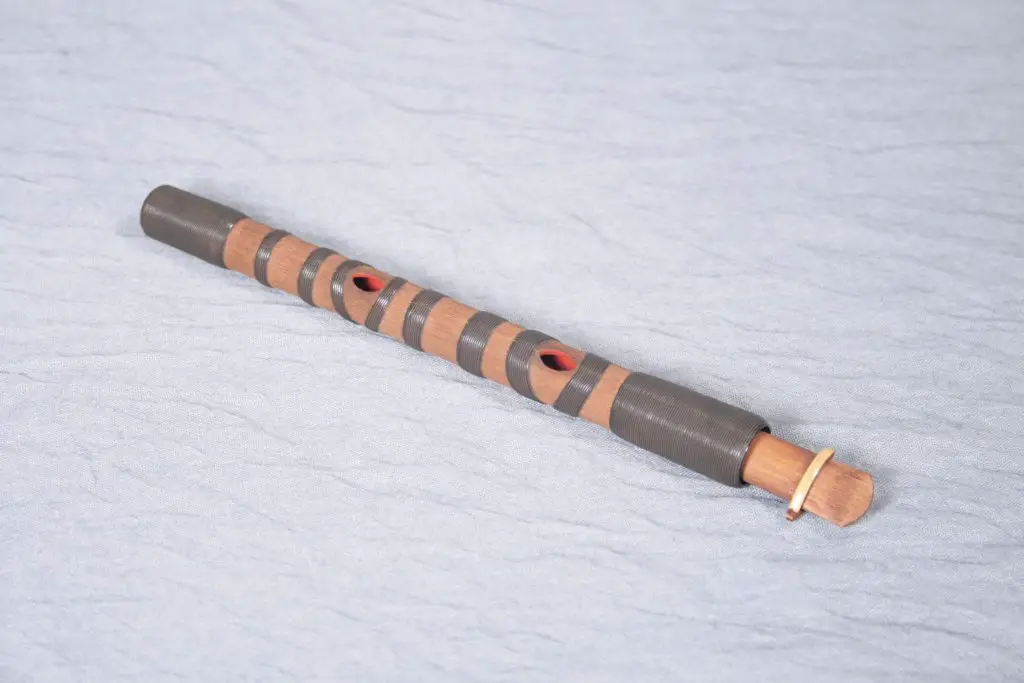
Hichiriki is often played in Japanese weddings.
2.3. Nohkan
One of the most characteristic Japanese musical instruments is Nohkan. This sophisticated flute was created in the 15th century by a famous musician and his son. Nohkan creates a very deep resonance and high pitched sound and it is often used in Japanese theaters, especially for traditional Imperial Noh performance.
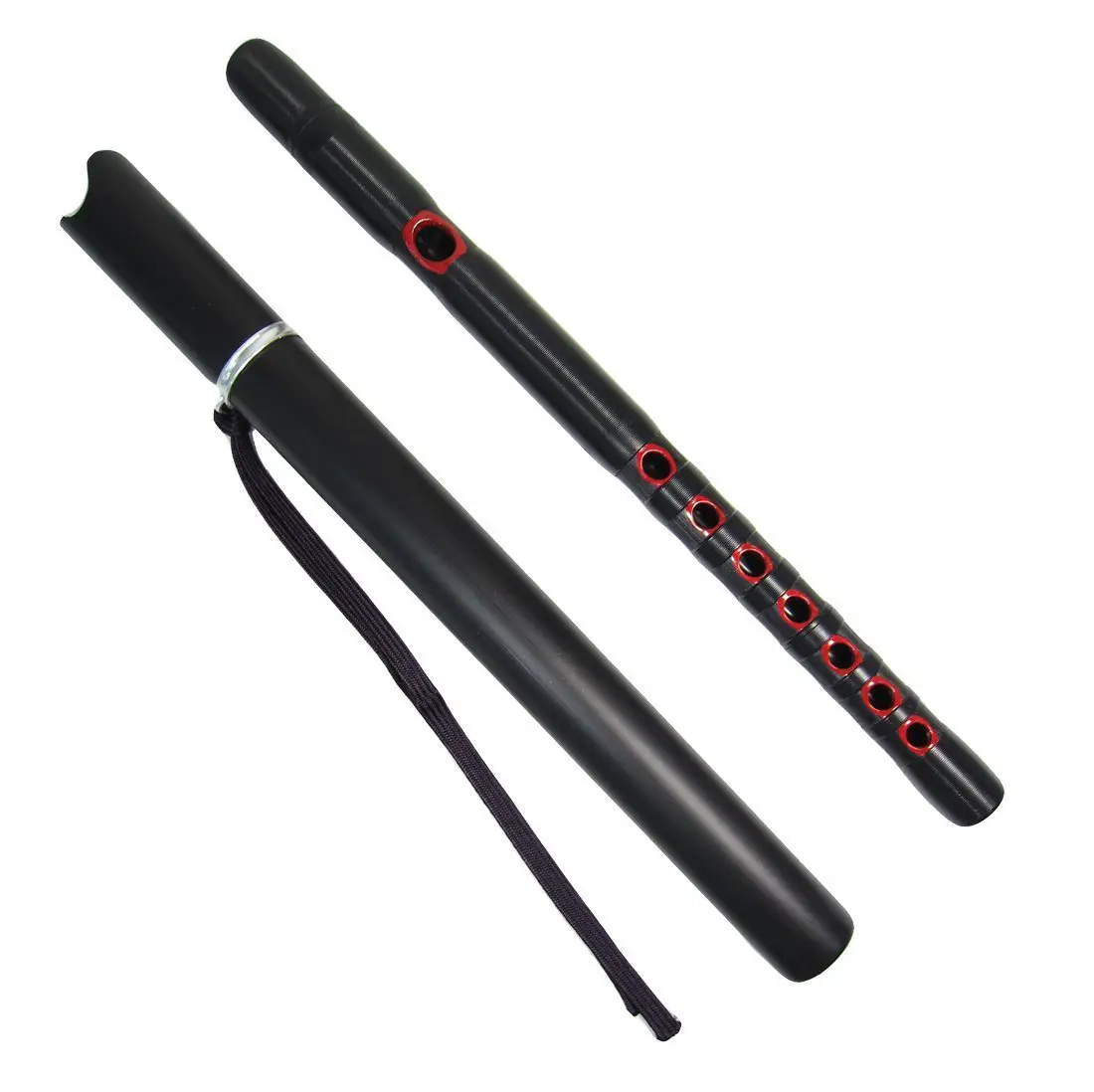
This sophisticated flute was created in the 15th century by a famous musician and his son.
Though Nohkan has been developed in various forms with different kinds of materials, the most standard thing that still remains is seven finger holes and a unique internal bore which allows the player to adjust the pitch in 2 octaves range!
3. Drums
Last but not least, the drums! The instrument first appeared in Japan in 6th century and has shown its significant position in Japanese entertainment since then. It is commonly used in both Japanese folk and classical musical traditions.
The drum comes in many varieties and can be categorized into several groups mainly by the construction process. There are three main types of drums which are Byouchi daiko, Shime daiko and Tsuzumi.
Conclusion
Despite the domination of Western instruments music nowadays, these traditional instruments still present and plays an important role in Japanese heritage. When you travel to Japan, you should visit the musical theaters to have your very own experience of these magnificent Japanese traditional instruments.
Hopefully, this above information can help you to take a step closer to Japanese culture.

